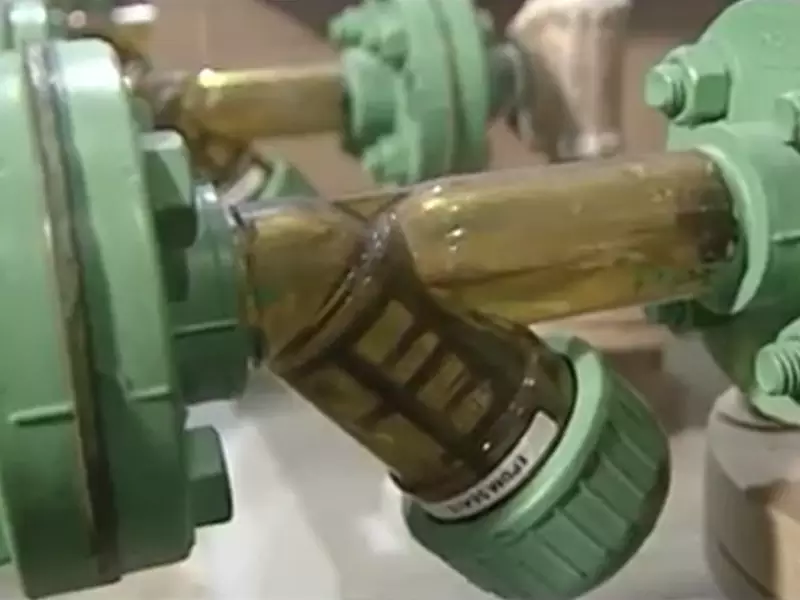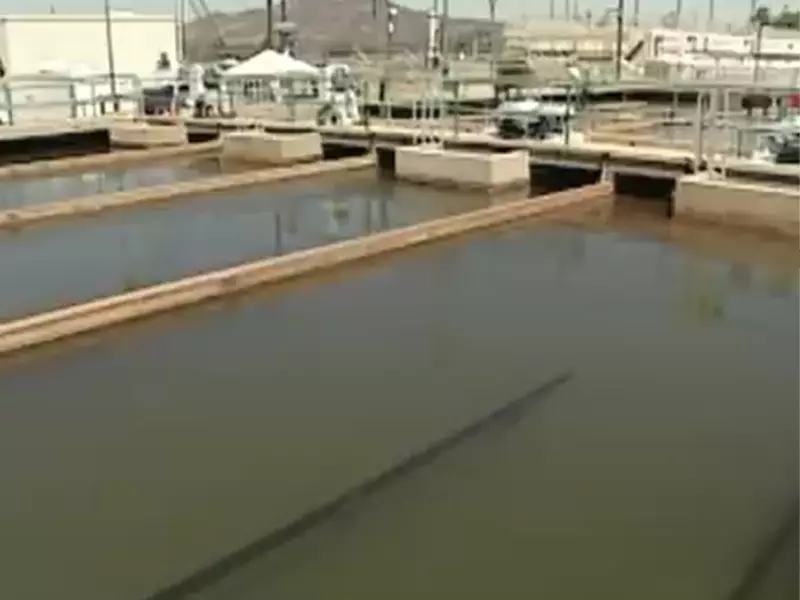Water treatment is a critical process that ensures the safety and quality of water for consumption, industrial use, and environmental health. Two pivotal steps in this process are coagulation and flocculation, both of which are essential for removing impurities and clarifying water. These methods target the microscopic particles and contaminants that are otherwise difficult to eliminate, making them cornerstones of effective water treatment strategies.
Coagulation and flocculation are sequential processes used to remove suspended solids from water. Coagulation involves the addition of chemicals to destabilize these particles, while flocculation gently mixes the water to encourage the coagulated particles to form larger aggregates, or flocs, which can be more easily removed. This synergistic approach effectively reduces turbidity, removes organic matter, and decreases microbial counts in water.
The significance of these processes extends beyond mere technicality; they are foundational to maintaining public health and environmental standards. By understanding the roles and mechanisms of coagulation and flocculation, water treatment facilities can optimize their operations to produce cleaner water, minimize waste, and efficiently manage resources. The technical nuances and environmental implications of these processes underscore the complexity and importance of modern water treatment methodologies.

Water Treatment Basics
Definition and Purpose
Water treatment encompasses a series of processes aimed at improving water quality to make it more acceptable for a specific end-use. These uses can range from drinking, industrial water supply, irrigation, water recreation to being safely returned to the environment. The primary purpose of water treatment is to remove contaminants or reduce their concentration so that the water becomes fit for its desired end-use.
Key Processes Overview
The water treatment process can be complex, involving several steps to remove physical, chemical, and biological contaminants. Key processes include sedimentation, filtration, disinfection, and desalination. Among these, coagulation and flocculation play critical roles in the preliminary stages of many water treatment protocols, setting the stage for subsequent purification steps.
Coagulation Overview
Definition
Coagulation is a chemical process that involves the addition of a coagulant to water to facilitate the aggregation of suspended particles into larger particles, known as flocs. This process effectively reduces turbidity and removes particulate matter.
Role in Water Treatment
In water treatment, coagulation is the first step in the sedimentation and filtration process. It helps in removing contaminants that are not easily removed by filtration alone. By causing particles to clump together, coagulation makes it easier for them to be removed through subsequent processes like sedimentation or filtration.
Common Coagulants
- Aluminum sulfate (Alum): One of the most commonly used coagulants, effective in a wide range of pH levels.
- Ferric chloride and Ferric sulfate: These are used for their effectiveness in removing heavy metals and phosphates.
- Polyaluminum chloride (PAC): Known for its efficiency at lower doses compared to alum.
Flocculation Overview
Definition
Flocculation follows coagulation, where gentle mixing encourages the tiny flocs formed during coagulation to combine into larger, more easily removable flocs. Unlike coagulation, which is a chemical reaction, flocculation is a physical process.
Role in Water Treatment
Flocculation enhances the effectiveness of sedimentation and filtration by forming larger flocs from smaller particles. These larger flocs settle more quickly and are more easily trapped by filtration systems, improving the overall efficiency of the water treatment process.
Flocculation Process
- Mixing: Slow mixing to promote the contact between coagulated particles.
- Growth: The particles form larger, visible flocs.
- Sedimentation: The flocs settle to the bottom due to their increased size and weight.
Coagulation Vs Flocculation
Process Comparison
While both processes aim to remove suspended particles from water, coagulation involves the chemical alteration of particles to form flocs, whereas flocculation is the physical process of agitating the water to form larger flocs from those smaller ones created during coagulation.
Chemicals Used
- Coagulation involves the use of chemicals like alum, ferric chloride, or PAC.
- Flocculation primarily uses polymers that enhance particle binding without altering the water’s chemistry.
Timing and Sequence
Coagulation must precede flocculation in water treatment processes. The sequence is crucial because coagulation prepares the suspended particles for aggregation, which is then facilitated by flocculation through gentle stirring.
Factors Influencing Coagulation and Flocculation
Water pH
- Coagulation: Optimal pH levels depend on the coagulant used. For example, alum is most effective in a pH range of 6.5 to 7.5.
- Flocculation: pH affects the charge and stability of formed flocs, impacting their growth and sedimentation.
Temperature
Lower temperatures can slow down the reaction rates of coagulation and flocculation, necessitating adjustments in dosages and mixing speeds to maintain efficiency.
Turbidity
High turbidity requires increased coagulant doses, as more particles are present that need to be aggregated. Conversely, flocculation conditions may need adjustment to ensure that flocs form properly under varying turbidity levels.

Application Techniques
Coagulation Methods
In water treatment, coagulation is a critical step for removing particles from water. This section highlights various methods used to achieve effective coagulation.
- Jar Testing: A laboratory procedure used to determine the optimal dose of coagulant required for specific water conditions.
- Dry Feeding: Direct addition of solid coagulants into the water stream.
- Wet Feeding: Coagulants are first dissolved in water before being added to the treatment process.
Each method has its advantages, depending on the water characteristics and treatment facility’s capacity.
Flocculation Methods
Following coagulation, flocculation involves the gentle mixing of water to form larger flocs that are easier to remove. Techniques include:
- Mechanical Mixing: Using paddles or impellers to gently stir the water.
- Hydraulic Mixing: Utilizing the flow of water itself to induce mixing.
- Air Mixing: Injecting air to promote floc formation.
Selecting the right flocculation method can significantly enhance the efficiency of water treatment processes.
Advantages and Challenges
Benefits of Each Process
Coagulation and flocculation offer distinct benefits:
- Coagulation removes dissolved and colloidal particles, reducing water turbidity.
- Flocculation enhances particle removal by forming larger aggregates that are easily separated from water.
These processes are fundamental in producing safe, clean drinking water.
Common Challenges
Despite their benefits, coagulation and flocculation face challenges:
- Chemical Overuse: Excessive use of chemicals can lead to environmental and health issues.
- Process Control: Achieving the right balance between coagulant dose and mixing intensity requires precise control.
Addressing these challenges is crucial for sustainable water treatment practices.
Case Studies
Real-World Applications
Case studies from around the world illustrate the effectiveness of coagulation and flocculation in water treatment:
- Municipal Water Treatment: Cities globally rely on these processes to meet drinking water standards.
- Industrial Wastewater Treatment: Industries use coagulation and flocculation to treat wastewater before discharge or reuse.
Success Stories
Notable success stories include:
- River Water Treatment Plant: A plant significantly reduced turbidity levels by optimizing coagulant dosing.
- Industrial Facility: Achieved compliance with environmental standards by integrating advanced flocculation techniques.
These examples demonstrate the practical benefits and applicability of coagulation and flocculation in diverse settings.
Future Trends
Technological Advancements
Innovations in water treatment technology are set to transform coagulation and flocculation processes:
- Automated Dosing Systems: Precise, real-time adjustment of coagulant doses based on water quality data.
- Eco-Friendly Coagulants: Development of biodegradable and less toxic coagulants.
These advancements promise improved efficiency and sustainability in water treatment.
Sustainable Practices
Sustainability is becoming a central focus in water treatment:
- Reducing Chemical Use: Techniques for minimizing chemical usage without compromising water quality.
- Energy Efficiency: Implementing energy-saving measures in the coagulation and flocculation stages.
Embracing these trends will ensure the long-term viability and environmental compatibility of water treatment processes.
Frequently Asked Questions
What are common coagulants used in water treatment?
Common coagulants used in water treatment include aluminum sulfate (alum), ferric chloride, and polymeric coagulants. These chemicals are effective in destabilizing and aggregating suspended particles, facilitating their removal during the subsequent flocculation and sedimentation processes.
How does temperature affect coagulation and flocculation?
Temperature plays a critical role in the coagulation and flocculation processes. Higher temperatures tend to increase the rate of chemical reactions, enhancing coagulant activity. Conversely, lower temperatures may slow down these reactions, requiring adjustments in chemical dosages or mixing intensity to achieve optimal results.
Can coagulation and flocculation remove all types of contaminants?
While coagulation and flocculation are highly effective at removing suspended solids, particulate matter, and some pathogens, they may not fully eliminate dissolved contaminants such as heavy metals or certain organic compounds. Additional treatment steps, such as filtration and disinfection, are often necessary to comprehensively address water quality concerns.
What are the challenges in coagulation and flocculation processes?
Challenges in coagulation and flocculation include optimizing chemical dosages, managing the variability of raw water quality, and minimizing the production of sludge. Effective process control and ongoing monitoring are essential to address these challenges and ensure consistent water quality.
Conclusion
The processes of coagulation and flocculation represent essential steps in modern water treatment, highlighting the intricate balance between chemical engineering and environmental stewardship. These methods not only contribute to the provision of safe, clean water but also reflect the ongoing efforts to refine and improve water treatment technologies. As we continue to face global challenges related to water scarcity and pollution, the importance of optimizing these processes cannot be overstated.
Ultimately, the success of water treatment strategies hinges on a deep understanding of coagulation and flocculation. By advancing our knowledge and technologies in these areas, we can better protect public health, preserve natural resources, and support sustainable development. The quest for cleaner water is a testament to human ingenuity and our collective responsibility towards the environment.
